It was a warm morning in Sasi, a small settlement on the Jaglot–Skardu Road, when I woke to the faint hum of a distant jeep engine and the smell of parathas being fried somewhere nearby. My body still ached from the ride the day before, but excitement coursed through me as I looked out over the mist-shrouded peaks of Haramosh Valley. We had arrived here the previous evening with a simple purpose — to begin our trek to the elusive Kutwal Lake, a hidden emerald gem surrounded by glaciers and peaks that seemed to pierce the heavens.
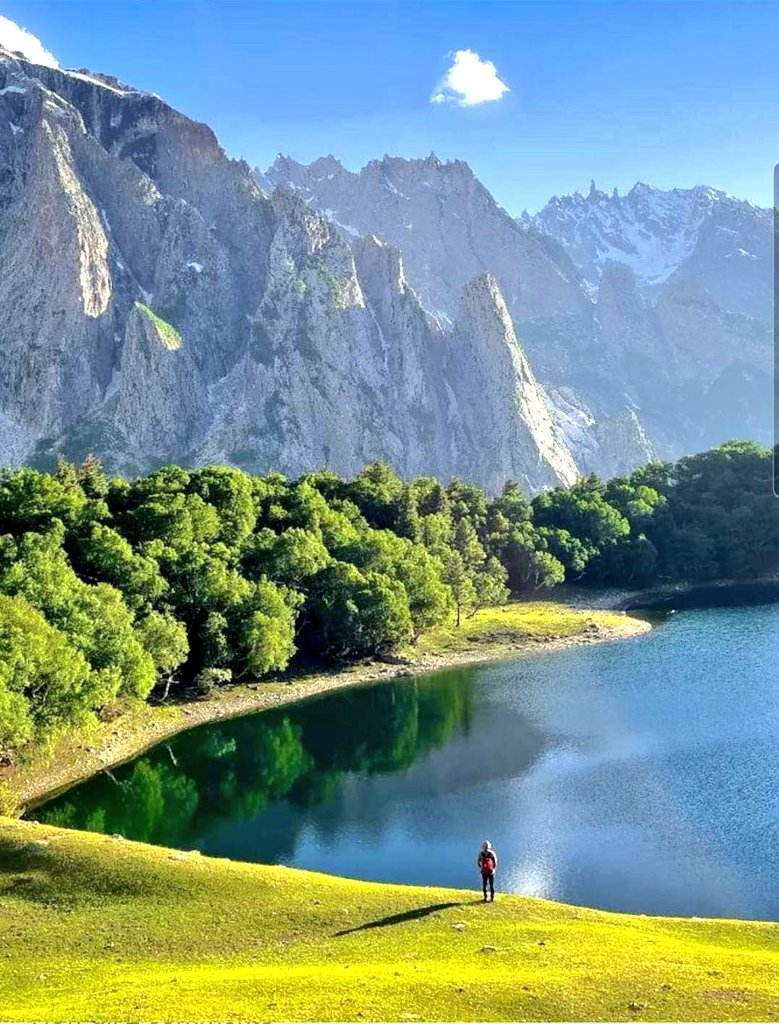
For most travelers, Sasi is a stopover — a place of convenience rather than destination. But to us, it was the gateway to adventure. The locals told us that people stop here mainly for two reasons: to head towards Khaltaro Valley or to make their way to Haramosh. Sometimes, during landslides on this unforgiving Skardu road, Sasi becomes a sanctuary for stranded travelers — a place where time stands still until the mountains allow passage again.
That morning, our jeep was ready, parked outside the small roadside hotel where we had spent the night. It wasn’t just us — another group of trekkers from IBA Karachi were joining the expedition. They looked cheerful, energetic, and far more prepared than we did. “This is Hamid Mir,” someone introduced, “and this is Zaheer, our guide.” We exchanged smiles, adjusted our backpacks, and began loading the jeep.
A Morning of Illness and Determination
Not every journey begins in perfect health. Yasir had been unwell the night before, and somehow, by morning, he had managed to pass his sickness to me. My stomach was churning — a cruel reminder that mountain travel tests both body and will. Ali, our third companion, was battling a stubborn flu. “We’ll fight the flu,” he laughed, though his eyes were half-closed and his nose red. We laughed too, more out of camaraderie than confidence.
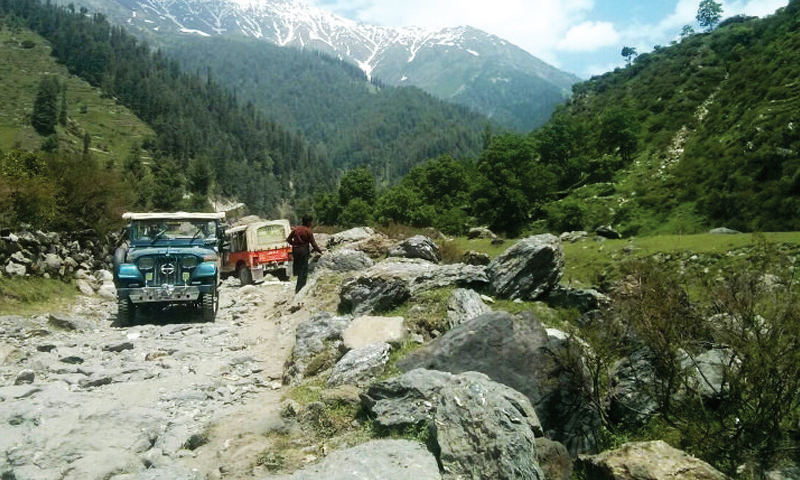
Breakfast was simple. I couldn’t stomach eggs and parathas, so I resorted to husk mixed in water — my morning medicine. Ali, as always, had his hearty meal, while Yasir and I settled for tea, a few biscuits, and packets of juice that we’d packed for the trail. We knew the day ahead would be long and grueling.
They told us the jeep track to Barchi, our starting point, would take around two hours, followed by another six to seven hours of hiking. It was already 9:30 a.m., and by the time we rolled out of Sasi, the sun had climbed high, setting the rocky landscape ablaze with golden light.
The Jeep Ride to Barchi
The jeep growled to life and we set off. The track snaked through a world carved by water and time — a harsh, jagged valley hemmed in by gray cliffs and splashes of green where life dared to thrive. As we bounced along the narrow dirt path, I realized how deceptive the word “track” can be. This wasn’t a road; it was a trail of endurance — a constant dance between man and machine over boulders, dips, and loose gravel.
“To be honest,” I said to Yasir, “I find the jeep track to be more difficult than the motorcycle trails.”
He nodded. “It’s so bumpy, I can’t even enjoy the view.”
Still, there were moments of awe. The Haramosh Peak loomed ahead, its snow-laden summit piercing the clear sky. Behind it, the elegant silhouette of Laila Peak shimmered in the sunlight. Bridges made of rough wooden planks hung precariously over roaring streams, swinging slightly as our jeep crossed. My grip on the railing tightened with every sway.
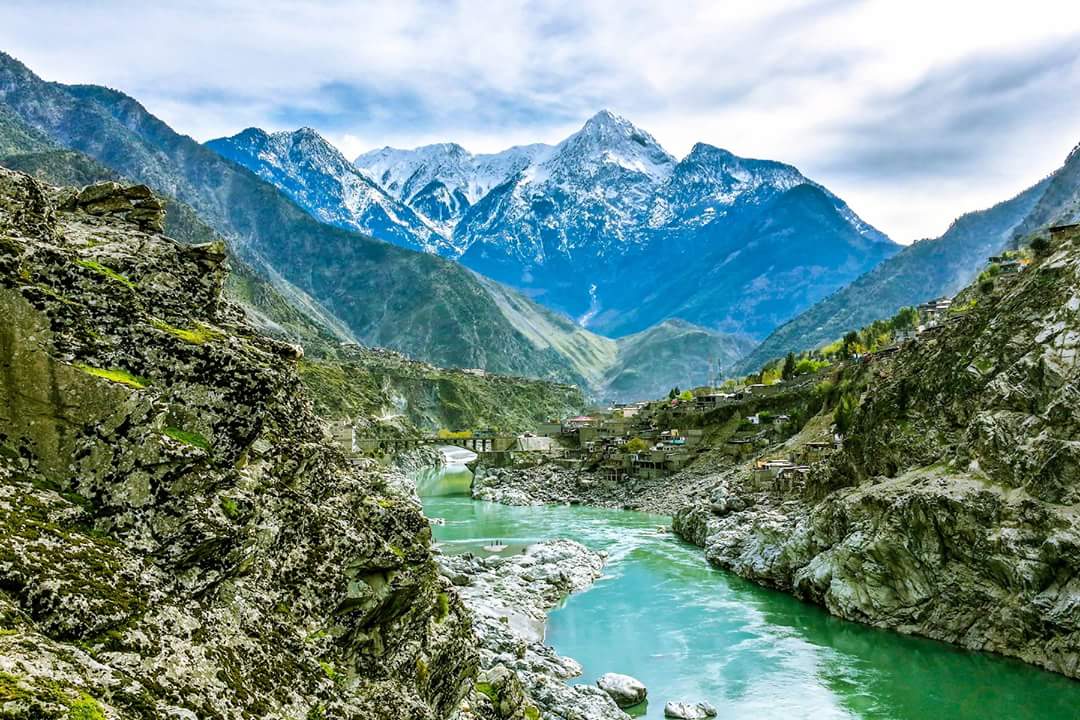
We passed through Dasu Village, where trees heavy with pomegranates, cherries, and apples offered a brief splash of color to the stony landscape. “Leave the apples alone,” someone from the group joked. I plucked one anyway — unwashed, dusty, but sweet, like nature’s own candy for weary travelers.
Arrival in Barchi — The Real Journey Begins
After two hours and twenty minutes of relentless jolting, we reached Barchi Village. The jeep came to a halt near a cluster of stone houses surrounded by small fields. The driver switched off the engine, and silence rushed in — the kind that only mountains can hold.
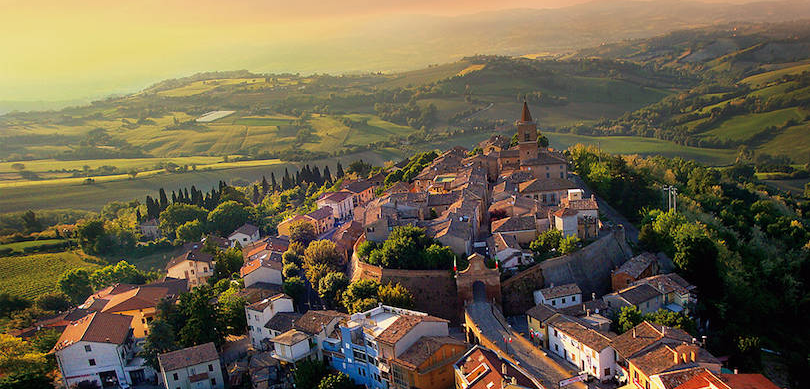
We unloaded our bags — two large backpacks, a tent, and sleeping bags. The rest of our luggage, we left behind in Sasi. Here, we met our local porters and guides: Altaf, a lean man with sharp eyes and an unwavering smile; Asad Ali, strong and quiet; and Shah Dil, cheerful despite the daunting climb ahead. They would lead us through the labyrinth of rocks, meadows, and ridges that separated us from Kutwal Lake.
From Barchi, two paths diverged: one towards Skoro, the other towards Guray. We would go by Guray and return through Skoro. It was already close to noon when we began walking — the sun directly overhead, the air dry and heavy.
The Long March Under the Sun
The first part of the trail was brutal. There was no shade, only heat radiating off the rocks. Each step raised clouds of fine dust that clung to our boots and filled our lungs. The track wound through sharp inclines and deep gullies, testing our stamina.
I remember thinking, We took this too lightly.
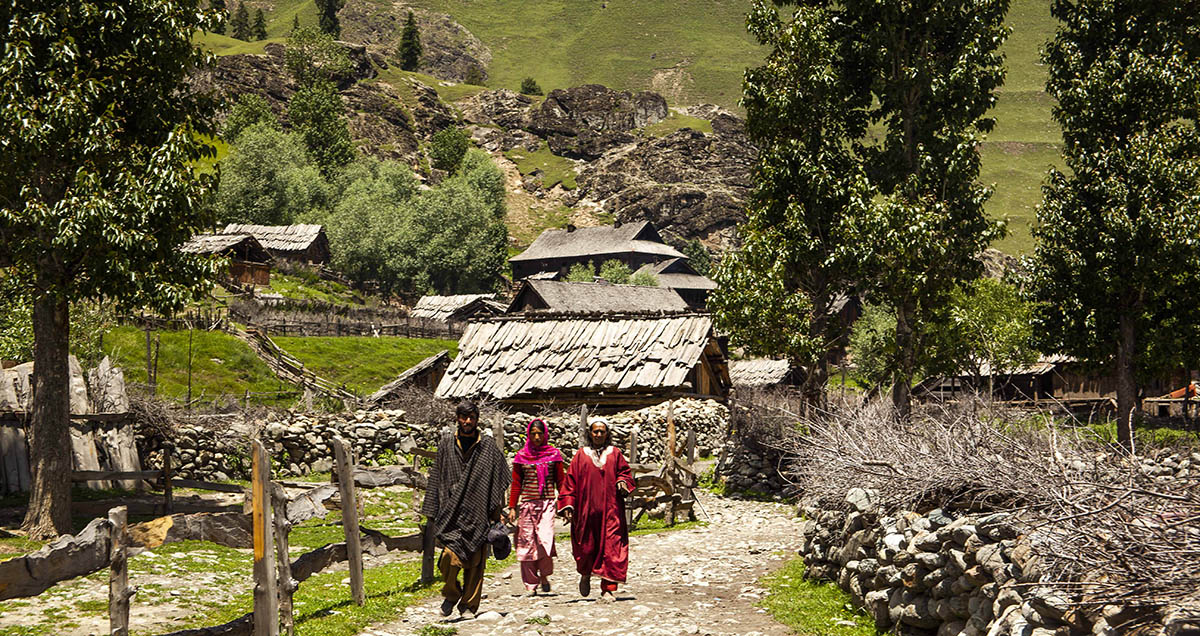
At one point, we paused under a lone apricot tree. The fruit hung ripe and golden, a small blessing in the middle of nowhere. “These will give us energy,” I said, reaching for one. The locals had warned us, though — too many fresh apricots could upset the stomach. By evening, both Ali and I would learn they were right.
Two hours in, we reached Mushko, a small settlement with green terraces and a narrow stream trickling through it. The heat was unbearable, and the uphill climb seemed endless. “Never felt so miserable on a track before,” Ali groaned. He was right — this was one of the toughest treks we had ever attempted.
We later learned that this entire initial section wasn’t even part of the original trail. Landslides and heavy rains earlier that year had destroyed the jeep track, forcing trekkers to walk several additional kilometers. What used to be a simple 1.5-hour jeep ride had become a three-hour hike under the burning sun.
Gouro Village — The Midway Refuge
By the time we reached Gouro, it was already late afternoon. Four hours had passed. The landscape had changed — the gray dust gave way to patches of green meadows, dotted with small huts. The air was cooler here, and the rhythmic murmur of a waterfall nearby brought a sense of calm.
Many trekkers choose to spend the night at Gouro, recovering before pushing onward to Kutwal Lake. But we were determined to continue. We rested briefly, refilled our water bottles, and admired the view — Haramosh Peak rising majestically before us, and a glacier shimmering in the distance like a river of glass.
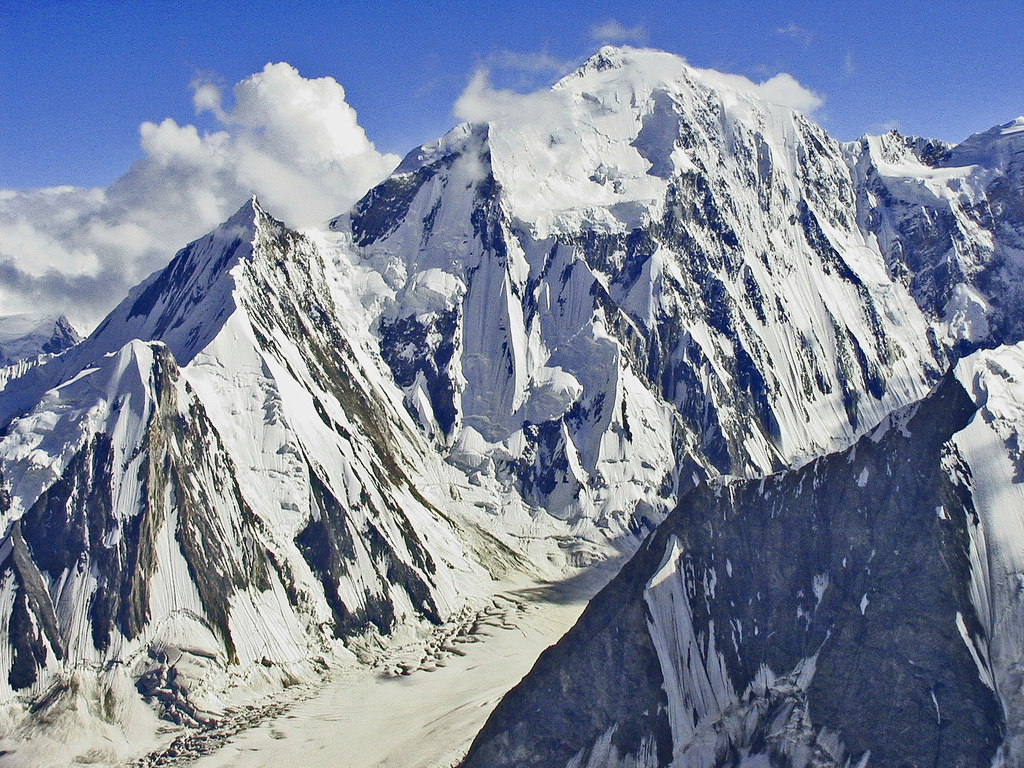
There was a small hotel perched on a ridge, visible from where we stood. I could see villagers tending to small plots of land — their summer fields. Most of them lived here only in the warmer months, leaving when the snow made life impossible.
From this point onward, the trail climbed steadily. We moved through a dense forest, the light now softened by clouds. The crunch of dry leaves underfoot was strangely comforting after the endless stones of the earlier sections. The forest smelled of pine and damp soil — the fragrance of endurance.
The Final Push
The fatigue was setting in. My legs felt like lead, my stomach still uneasy. Yasir, usually the strongest among us, was struggling too. Altaf, however, kept smiling. “Bas thora sa reh gaya hai,” he kept saying. Just a little more to go. But I was beginning to doubt him.
“Do you realize,” I whispered to Ali, “he’s been saying ‘a little more’ for the last three hours?”
Ali laughed between gasps. “He’s giving us false hope — the only thing keeping us moving.”
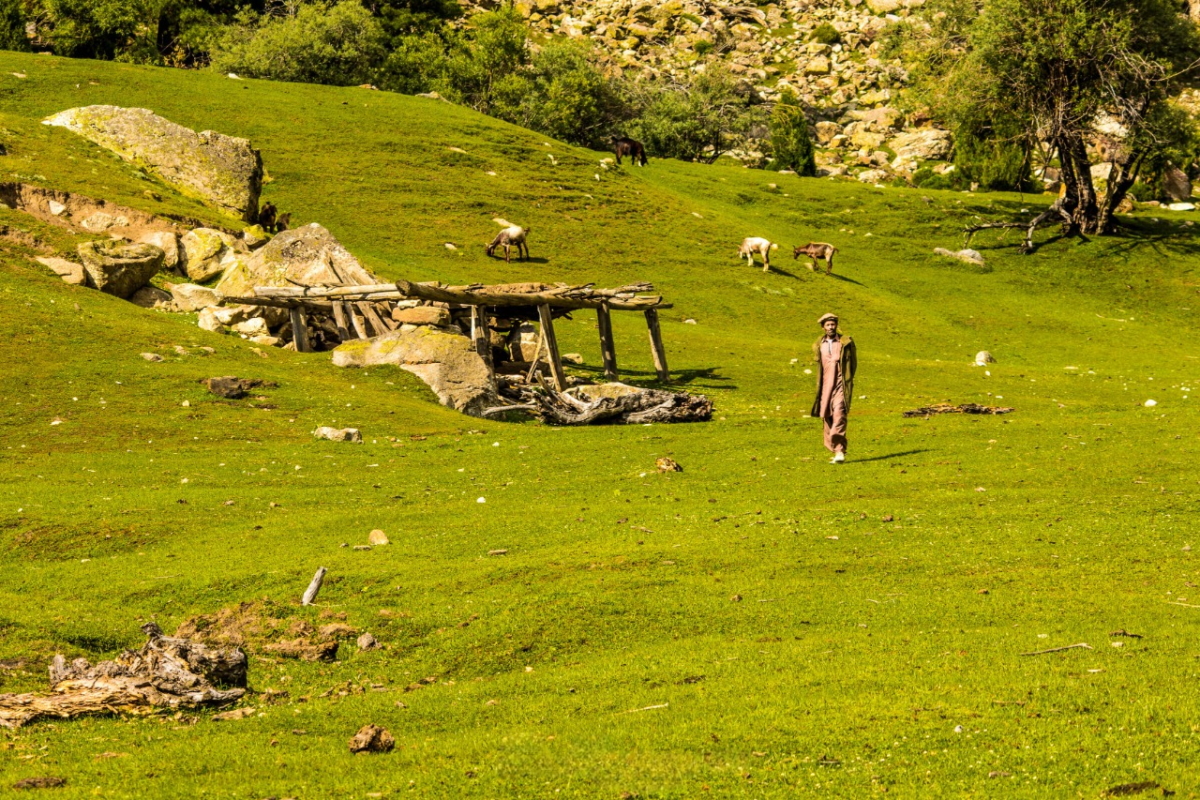
Around 7 p.m., the sun dipped behind the peaks, bathing the valley in orange light. The play of light and shadow over Haramosh was breathtaking. I stopped, took a deep breath, and felt the cool evening wind on my face. For a moment, all exhaustion vanished. This — this beauty — was why we traveled.
We reached a meadow where the trail flattened out. Snow-covered peaks framed us on both sides, and a stream meandered through the grass like silver thread. It was tempting to camp there, but Altaf urged us onward. “Kutwal is only an hour from here,” he promised.
An hour later, we stumbled into Kutwal Village, the first settlement near the lake. The sun was gone, replaced by a sky full of stars. It was 8:50 p.m. We had walked for nearly eight hours — hungry, drenched in sweat, and utterly drained.
The Mountain Night
Kutwal greeted us with silence and the soft gurgle of distant water. A few stone houses stood scattered across the meadow, their windows glowing with candlelight. The villagers had simple lives — wooden roofs, livestock, and fields fed by glacial streams.
We were welcomed by Aqib and Yasin, the local cooks who quickly began preparing dinner for us. The scent of chicken karahi soon filled the crisp mountain air, mingling with the smoke of burning firewood. “Do you want tea with sugar or without?” Yasin asked. “With sugar!” I replied instantly. “Except one cup for Yasir — he’s already sweet enough,” Ali joked, and we all laughed despite our exhaustion.
Dinner was heavenly. Maybe it was hunger, maybe fatigue, but that karahi tasted like the best meal of our lives. The rice, the lentils, even the plain roti — everything felt divine. We sat cross-legged around the fire, our faces glowing in the light. Altaf, still cheerful, recounted stories of travelers who had lost their way or braved snowstorms to reach the lake.
When he said, “You were only six kilometers away when you asked if we were close,” we couldn’t help but groan. “You tricked us, Altaf!” I said. He just smiled. “If I told you the truth, you’d have stopped halfway.”
Rest and Reflection
By 10 p.m., we retired to our room — a simple wooden cabin with two beds and a single lightbulb flickering dimly. The cool wind seeped through the cracks, but it felt refreshing. We lay there, staring at the ceiling, too tired to talk.
The day had tested every ounce of our endurance — from the punishing jeep ride to the scorching trail, the landslides, and the altitude. But as sleep slowly pulled us in, there was a deep sense of satisfaction. We had made it. Tomorrow, we would finally see Kutwal Lake, the shimmering jewel we had come so far to find.
Before turning off the light, I thought of the people we had met along the way — the locals offering us fruit, the children waving as we passed their homes, the quiet resilience of the guides. Their lives were harsh, yet their hearts were open.
In the mountains, you learn that survival isn’t just about strength — it’s about kindness, patience, and faith.
Epilogue
In the days that followed, we explored the lake, met more locals, and marveled at the changing moods of the Haramosh peaks — from fiery gold at sunrise to icy blue at dusk. But no moment was as powerful as that first night in Kutwal — when exhaustion gave way to peace, and the stars watched silently over tired travelers who had earned their rest.
When we finally left Haramosh, heading back towards Skardu, I looked out the jeep window one last time. The trail we had conquered stretched behind us like a scar on the mountain — a reminder of struggle, beauty, and faith.
As the jeep rattled forward, I whispered, We’ll be back. Maybe not on foot, maybe not in pain. But we’ll be back.
Because journeys like this — they don’t just take you to a destination.
They take you within yourself.








